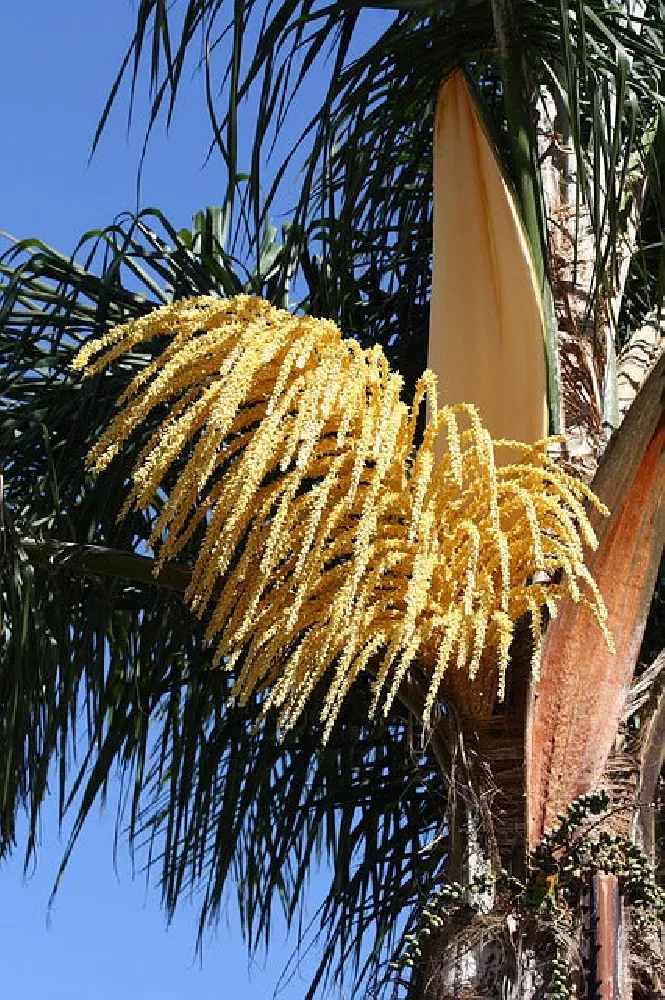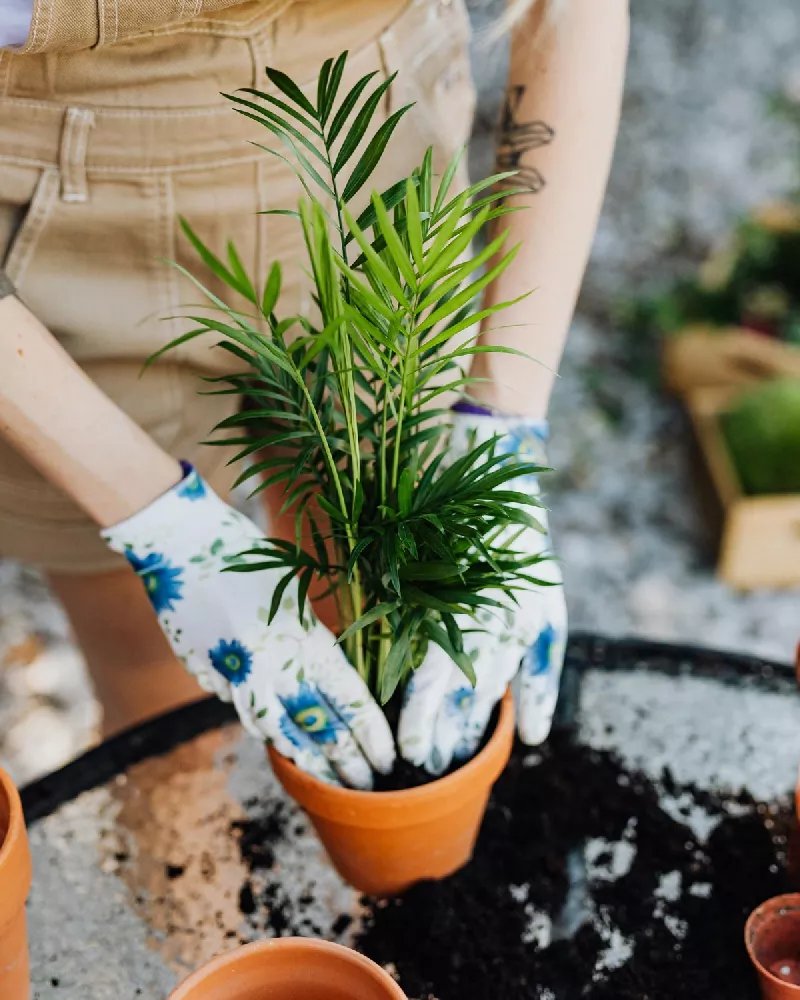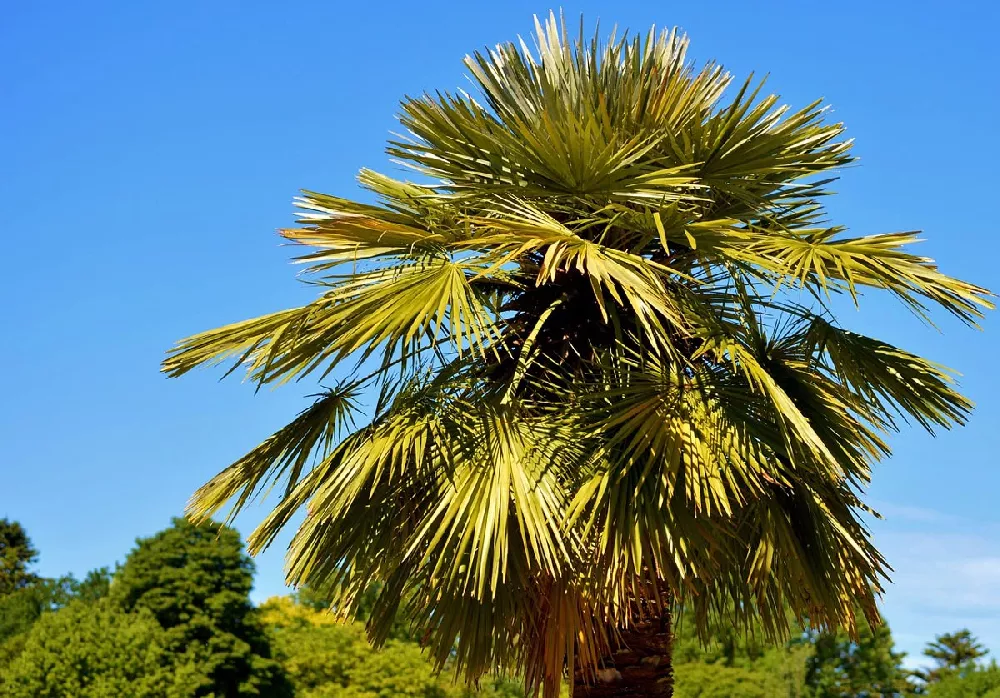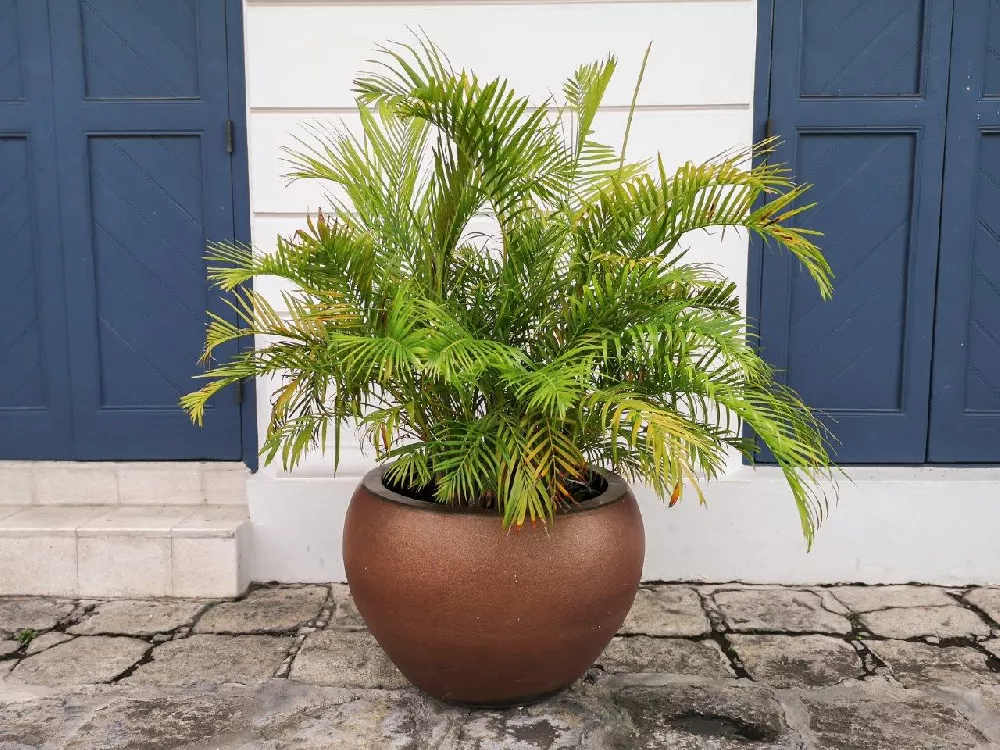- Home >
- Palm Trees >
- Queen Palm Tree
Queen Palm Tree for Sale
- Ships in 1-2 days
- 1-Year Warranty Eligible
- Pots or accessories are not included unless specified in the product options.
Shipping Details:
Once your order is shipped, you’ll receive an email with a tracking number and estimated delivery date. Most orders ship immediately, but some items are seasonal and may only ship in spring or fall. These products are noted on the website.
The queen palm tree (Syagrus romanzoffiana) is a popular ornamental palm tree native to South America. It is a favorite choice of gardeners and landscapers worldwide. This palm is used as a single specimen focal point as well as to line driveways and walkways. If you live in the southern part of the U.S., here are a few other reasons to choose a queen palm:
- Produces sweet fruit that resembles a cross between bananas and plums.
- Queen palms also go by the names of cocos: australis, palm, and plumosa.
- Quickly grows to 50 feet tall with a 25 foot canopy.
Plant Care
Sunlight

Queen palm trees grow best in partial to full sun, with a minimum of 4-6 hours of direct light a day.
Watering
Water regularly, especially during hot weather. Your palm tree needs at least one inch of water a week.
Fertilizing

Apply a slow-release fertilizer formulated for palm trees regularly throughout the growing season.
Planting Instructions
Choose a site that receives full sun and has moist, well-drained soil. Pay close attention to overhead obstructions such as wire and overhangs. You will also want to provide your palm tree with a minimum clearance of at least 15 feet in diameter. The queen palm is not picky about soil makeup. But it does well with a loose mixture that includes peat or shredded bark. There are several well-balanced soil mixes designed specifically for palms or cactus. Your tree will do best with a soil acidity of about 5.5 to 7.5 pH, which falls within the range of most garden soil. Dig your palm tree’s hole deep enough for the root ball’s top to rise about an inch above the surrounding soil. The hole needs to be two to three times the width of the root ball. Mix the soil you have removed from the hole with compost and one or more of the amendments mentioned above. Backfill the hole with the amended soil and water deeply.
Watering and nutrients
For the first week after planting, you should water your new queen palm tree every day. The next week you can cut down to an every-other-day schedule. In the third week, your tree only needs three days of watering. Once the trees are established, twice a week watering is usually enough. During dry periods, you may need to supplement your tree’s water intake. Do not worry about overwatering your palm tree. Queen palms are from a tropical environment, so they are used to a lot of water. Slow-release fertilizers will work for 10 to 12 weeks. They feed your tree in a more controlled manner for an extended period. Quick-release fertilizers can be used, but they may wash away before feeding your tree.
Pruning
The only pruning that is recommended for queen palms is removing dead or dying fronds. It is advisable to do this in the late fall. Dried-out fronds act as protection in extreme temperatures, even if they are unsightly. You can also remove them for aesthetic reasons. You will need to use a saw and cut the fronds a few inches from the trunk. Do not trim the top of your palm tree, as it will never grow back.
Pests, diseases, and animals
Many of the pests affecting queen palm trees are only found in some geographical areas. Watch for beetles, caterpillars, mealybugs, mites, scale, and whiteflies. Palm leaf skeletonizer and scale insects may also be a problem. Suitable insecticides are usually effective in treating them. Airborne fungi attack the palm’s growth buds on occasion. This is where the tree’s new leaves emerge. Prune the infected fronds and treat the remaining area with an appropriate fungicide. Rodents, especially rats, are another common problem that most palms share. Gophers and rabbits also chew on the tree’s new growth and can stunt or kill it.
Harvesting
Do not try to harvest the queen palm’s fruit until it is completely ripe. You will know it is ready when the fruit turns from a yellow-gold to an orange color. The ripe fruit can be removed from the tree, or you can wait until it falls to the ground.
FAQs
Can I grow a queen palm in a pot?
While you can start seedlings or young palms in containers, they cannot stay there for long. With their first growth spurt, the palm becomes very top-heavy and will start to topple over. They also prefer outdoor conditions but can survive as a dwarfed houseplant or patio plant.
Where do queen palm trees grow best?
Queen palms are on the hardier side of the palm tree family. But they can only withstand light frosts for very short periods. You need to add extra cover or protection if your area suffers from a longer-than-normal cold spell.
Will my queen palm’s roots damage the sidewalk or foundation?
Not usually, their roots are narrow and slender, so they do not cause the same type of damage as thicker-rooted trees. The palm’s roots will branch out in a circle from the trunk. They then form a thin, strong net that grips the soil and holds the tree in place.
How do palm trees survive hurricane-force winds?
Several traits help queen palms stay upright during heavy winds and storms. It starts with their root system that spreads close to the surface, creating a widespread net. This makes a heavier base to help steady the tall tree. Another reason palms rarely snap off or in half is due to the heavy moisture content in the trunk. It is a fibrous material that gives the palm a stretchy or elastic quality.










